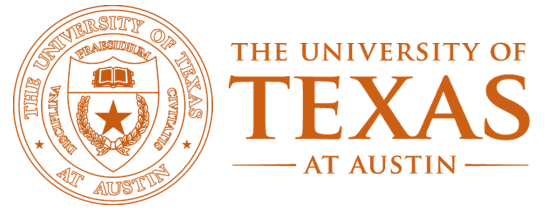Suggested Citation: Meyer, I.H., Frost, D.M., Hammack, P.L., Lightfoot, M., Russell, S.T., & Wilson, B.D.M. (2016). Quantitative Methods Document.
Generations participants were recruited by Gallup, Inc., a survey research consulting company (http://www.gallup.com/) using the Gallup Daily Tracking Survey as initial contact. Generations participants were screened and enrolled in the study between March 28, 2016 – March 30, 2017.
The Daily Tracking Survey is a telephone interview of a national probability sample of 1,000 adults ages 18 and older daily (350 days a year) to inquire about topics including the respondents’ politics, economics and general well-being through the. Respondents include English and Spanish-speaking individuals from all 50 U.S. states and the District of Columbia.
Gallup uses a dual-frame sampling procedure, which includes random-digit dialing (RDD) to reach both landline and cellphone users, as well as an additional random selection method for choosing respondents with landlines. Gallup stratifies the RDD list to ensure that the unweighted samples are proportionate by U.S. Census region and time zone. Gallup weights the data daily to compensate for disproportionalities in non-response and selection probabilities.
The Generations study used a 2-step recruitment procedure. In the first step, utilizing a question asked of all Gallup respondents, all LGBT individuals were identified. The Gallup question to assess sexual orientation and gender identity asked by the phone interviewer is “I have one final question we are asking only for statistical purposes. Do you, personally, identify as lesbian, gay, bisexual, or transgender?”
In the second step, respondents who were thus identified as LGBT were assessed for eligibility for participation in the Generations study and those eligible were invited to participate in Generations.
Respondents were eligible if they identified as LGB (and not transgender) in response to a question that asked if they were lesbian, gay, bisexual, queer, or same-gender loving, if they were in the age and race/ethnicity groups targeted for the 3 cohorts under investigation in Generations: ages 18 - 25, 34 – 41, or 52 – 59; Black, Latino, or White; completed 6th grade at least, and if they spoke English well enough to conduct the phone interview in English. (Respondents who identified as transgender, regardless of their sexual orientation, were screened for participation in a sister TransPop study.)
Respondents who were eligible for participation in Generations were invited to participate in the study. If they agreed, they were emailed or mailed a survey questionnaire to complete by self administration (via a web link or printed questionnaire, respectively). Respondents were sent $25 gift certificate. Prior to completing the survey, respondents reviewed the consent information. Respondents then returned the printed questionnaires for data entry using a provided addressed envelope or submitted the web survey online.
In total, 366,644 participants were screened by Gallup for inclusion in the Generations study. Of them, 3.5% were identified as LGBT and 27.5% of them were eligible for Generations based on the eligibility criteria. Of them, 80% agreed to participate in the survey and of those, 48% completed the survey. The final Generations baseline sample size was 1,345.[i]
Following this baseline interview, respondents are scheduled to complete two follow up surveys, using the same modality (mail or web) and the same compensation of $25 per interview, one year apart, at Year 2 and Year 3.
[i] To increase the sample size of Black and Latino respondents in the sample, baseline recruitment for these groups was extended until March 30, 2018. Once recruitment has been completed, the additional respondents will be added to the final Generations baseline dataset, and the final dataset will be re-weighted.
Weighting Information
Base Weights
The base weights for this study were calculated for the Daily Tracking Frame for the timeframe included in this study in multiple stages. The entire frame, selected as an RDD sample, was initially weighted to represent 18+ US population. The weighting process accounted for multiple stages of selection and non-response.
Non-Response Stage 1:
The first stage of non-response accounted for respondents agreeing to be re-contacted by Gallup for follow-up studies. Non-response adjustment cells were created based on demographic characteristics defined as Hispanic x Region x Age x Gender x Education. For nonresponse adjustments, the inverse of weighted response rates (weighted by base weight) for each cell was used as the non-response adjustment factor.
Non-Response Stage 2:
The second stage of non-response accounted for respondents who were deemed eligible for the LGB study agreeing to be re-contacted for this study. Non-response adjustment cells were created based on demographic characteristics defined as Age x Gender x Region x Education. For nonresponse adjustments, the inverse of weighted response rates (weighted by cumulative weight) for each cell was used as the non-response adjustment factor. All respondents who agreed to participate in the study at this stage were sampled so every eligible person had an equal selection probability.
Non-Response Stage 3:
The third and final stage of non-response accounted for respondents who were sampled and did not complete the survey. Non-response adjustment cells were created based on demographic characteristics defined as Age x Gender x Region x Education. For nonresponse adjustments, the inverse of weighted response rates (weighted by cumulative weight) for each cell was used as the non-response adjustment factor. The Final AAPOR response rate for the study was 4.7%.
Post Stratification Adjustment:
The final step was a post-stratification adjustment to targets for the LGBT community obtained from weighted estimates using the Gallup Daily Tracking surveys. Non-Response Adjusted Weights were post-stratified to targets for LGBT population were created for age, gender, education, race/ethnicity and region.







